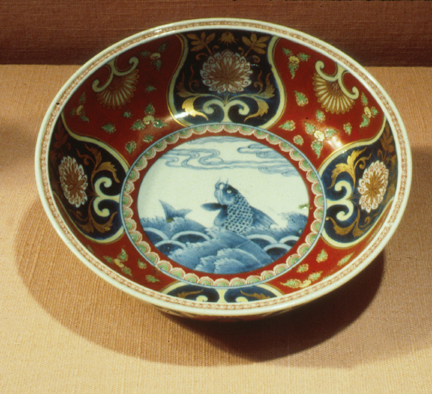
Imari Bowl, Porcelain with Overglaze and Luster
Japan, Edo Period, circa 1700 CE
ART 198 - HISTORY OF WORLD CERAMICS
| Imari ware is named after the port in Arita on the island of Kyushu through which pottery was exported to Europe by the Dutch East India Company. Imari is the name Europeans used to refer to this ware. The porcelain body is a fine, white translucent clay. The color palette differs from Kakiemon, and usually features a design in underglaze cobalt (the fish jumping from the waves seen here), with all other colors being overglaze red, green, and rose, and overglaze gold luster. Imari ware has an ornate, European quality about it, probably because it was made primarily for the export market. Edo period Imari is hand painted and lively, but later reproductions made in Europe used transfer printed photographic decals, and much of the charm and quality of the work disappeared. | Imari Bowl, Porcelain with Overglaze and Luster Japan, Edo Period, circa 1700 CE |
|
|